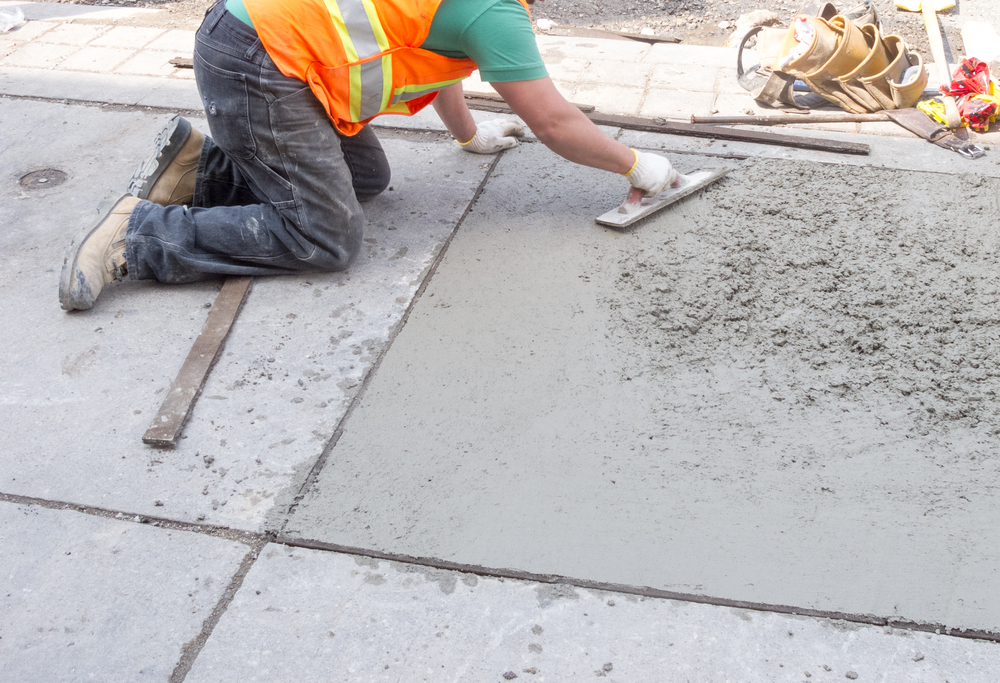Concrete surfaces can be subject to damage and wear over time due to a range of factors, including weather, foot traffic, heavy machinery, and natural settling. When this happens, many property owners are faced with the decision of whether to repair or replace the damaged concrete.
If you’re in this situation, you might be wondering: which option is better? Should you opt for concrete lifting or replacement? In this article, we’ll explore the pros and cons of both approaches, as well as provide some helpful tips on how to choose the best option for your needs.
Concrete crack repair is a crucial aspect of maintaining the integrity of your concrete surfaces. It involves addressing small to moderate cracks to prevent further damage and deterioration. Concrete lifting and replacement are two primary options for dealing with more significant damage or settlement issues. While concrete lifting can be a cost-effective solution for addressing uneven or sunken surfaces, it may not be suitable for all types of damage.
Concrete Lifting
Concrete lifting is the process of raising sunken or uneven concrete surfaces by injecting a specialized foam underneath them. This foam expands and hardens, effectively lifting the concrete back into place. This technique is also known as foam jacking, slab jacking, or polyurethane concrete raising.
One of the biggest advantages of concrete lifting is that it is often less expensive than replacement. In addition, it is a faster process that requires less labor, machinery, and materials, making it a more eco-friendly option. Furthermore, it is a non-invasive method that does not require the removal of the old concrete, resulting in less disruption to the surrounding area.
Polyjacking concrete leveling is a specific method of concrete lifting that uses high-density polyurethane foam to raise and stabilize sunken slabs. This technique can be an excellent alternative to concrete replacement, offering benefits such as cost savings, reduced downtime, and minimized environmental impact.
Problem with DIY concrete lifting arises when inexperienced individuals attempt to perform these techniques without proper knowledge or equipment. Improper lifting can lead to further damage or uneven surfaces, negating the benefits of cost-effectiveness. Hiring professionals ensures that concrete lifting is done correctly and efficiently, maintaining the integrity and longevity of the repaired surfaces.
When it comes to concrete lifting, there are a variety of methods available. Some companies use traditional methods such as mudjacking or slab replacement, while others use newer and more innovative techniques like polyurethane foam injection. It’s important to choose a method that not only provides the desired results but also has long-lasting effects. This is where the expertise of a professional concrete lifting company comes into play. By using their knowledge and experience, they can help determine the most effective method for your specific situation, ensuring that your concrete is lifted and levelled properly.
Concrete Replacement
Concrete replacement, as the name suggests, involves removing the old, damaged concrete and pouring new concrete in its place. This process is more extensive and time-consuming than lifting, and usually requires heavy machinery, more labor, and more materials.
When dealing with less severe issues, damaged concrete repair can be a cost-effective alternative to complete replacement. Repairing damaged concrete not only restores its structural integrity but also enhances its appearance, extending its lifespan without the need for extensive demolition or reconstruction.
While concrete replacement can be more costly and time-consuming than lifting, it does have some advantages. For example, it can be an opportunity to change the design or layout of the concrete surface, or to upgrade to a higher quality or more durable concrete material. Replacement can also be a better option for severely damaged or degraded concrete that is beyond repair.
Choosing the Best Option
So, how do you know whether to choose concrete lifting or replacement? Here are some factors to consider:
Extent of the Damage: If the damage to your concrete is minor, such as cracking or settling, lifting may be the better option. However, if the damage is extensive, such as large cracks or severe degradation, replacement may be necessary.
Cost: As mentioned, concrete lifting is often less expensive than replacement. However, the exact cost will depend on the extent of the damage, the size of the surface area, and other factors. It is always a good idea to get a quote from a reputable concrete lifting company such as FOAMEXperts, the top option for concrete slab lifting companies in Calgary.
Timeline: If you need your concrete surface fixed quickly, lifting may be the better option, as it is a faster process. However, if time is not a concern, replacement may be an opportunity to make upgrades or changes to the design.
Environmental Impact: If you’re concerned about the environmental impact of your concrete repair, lifting is generally considered a more eco-friendly option. The foam used in concrete lifting is made of recyclable materials and does not require the disposal of old concrete.
In conclusion, both concrete lifting and replacement have their pros and cons. The best option for you will depend on your individual needs and circumstances. It is always recommended to consult with a professional concrete lifting company such as FOAMEXperts, the top concrete lifting specialists in Calgary, to get a quote and expert advice on which option is right for you.
Frequently Asked Questions About Concrete Lifting vs. Replacement
1. What is concrete lifting?
Concrete lifting, also known as mudjacking or slabjacking, is a process where a special mixture is injected beneath a sunken concrete slab to raise it back to its original level.
2. What is the difference between concrete lifting and replacement?
Concrete lifting repairs existing slabs by leveling them, whereas replacement involves removing the damaged concrete and pouring a new slab in its place. Lifting is less invasive, faster, and usually cheaper than full replacement.
3. When should I choose concrete lifting?
Concrete lifting is ideal when your concrete slab is structurally sound but uneven, such as sunken driveways, sidewalks, or patios. It’s best for minor to moderate sinking without major cracks or structural issues.
4. When is concrete replacement a better option?
Replacement is the better option when the concrete is severely damaged, cracked, or deteriorated beyond repair. It’s also necessary if the soil beneath the slab is unstable or if multiple sections are affected.
5. How long does concrete lifting last?
With proper maintenance and soil stability, concrete lifting can last for many years. The longevity depends on the condition of the soil and the quality of the lifting job.
6. Is concrete lifting cheaper than replacement?
Yes, concrete lifting is typically more affordable than replacement because it involves less labor, materials, and time. It can save up to 50-70% of the cost of replacing the slab.
7. How long does concrete lifting take compared to replacement?
Concrete lifting can be completed in just a few hours, while replacement often takes several days, including curing time for the new concrete.
8. Can concrete lifting fix all types of concrete issues?
Concrete lifting is effective for sinking and minor settling. However, it cannot fix large cracks, severe damage, or underlying soil problems. In such cases, replacement may be necessary.
9. Is concrete lifting environmentally friendly?
Yes, concrete lifting is considered environmentally friendly because it reuses the existing concrete, reducing the need for new materials and waste.
10. Will the new concrete match the old slab if I opt for replacement?
Newly replaced concrete may not perfectly match the older slabs in terms of color and texture, especially if the surrounding concrete has weathered over time. Concrete lifting avoids this issue by keeping the original slab intact.
11. How do I know if my concrete slab can be lifted or needs to be replaced?
A professional inspection is recommended to assess the condition of the slab. They will check for cracks, stability, and underlying soil conditions to determine whether lifting or replacement is the best option.
These FAQs can help readers understand the differences between concrete lifting and replacement, and guide them in making an informed decision.




